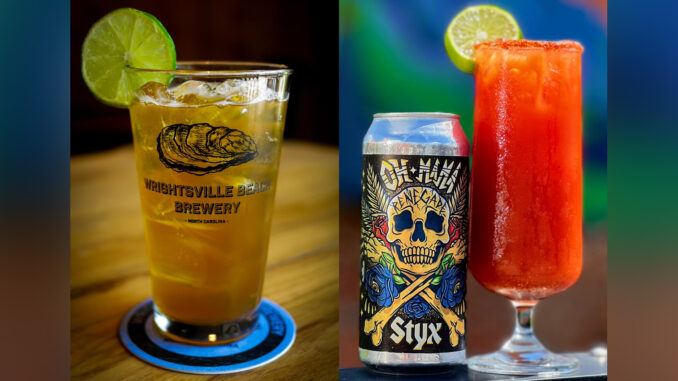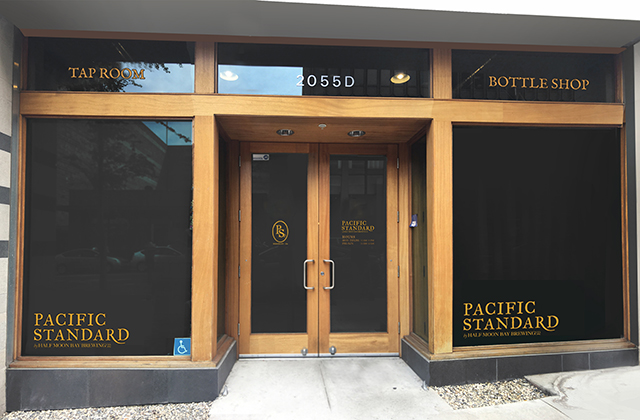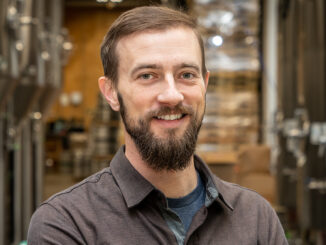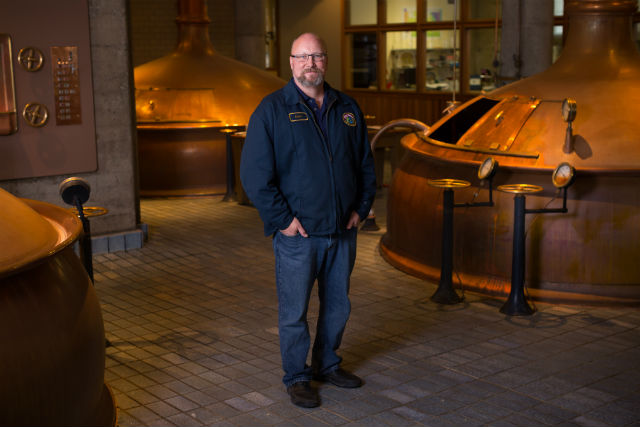
Many breweries are increasingly embracing mixology as a way to both expand their customer base and diversify their offerings beyond serving a traditional pint. This trend, often showcased through beer-based cocktails and curated mocktails, enables breweries to tap into evolving consumer preferences without straying from their core identity.
Brew-based mixed beverages allow customers to see a whole other side of brewing, explained the team at Great Basin Brewing.
“It allows them to experience things they may not otherwise have been able to,” they said. “We are constantly looking to provide a guest experience that helps set us apart, and brew-based cocktails have allowed us to do that.”
Great Basin has leaned into this philosophy by creatively cross-utilizing their beers in cocktails, such as micheladas featuring their jalapeño-infused Chilebeso. Not only does this approach minimize waste and improve operational efficiency, but it also elevates the taproom experience, inviting guests to explore a more complex and surprising side of brewing.
Great Basin said they have found that vodka and tequila go well with Sours and Goses. Bourbon tends to go really well with Stouts and other beers with “richer” flavors.
By turning their own beers into cocktail ingredients, they add a new layer of engagement while maintaining brand integrity.
“Our brewers make an amazing product. When you already have a product of that quality at your fingertips, it seems silly not to use it to its fullest potential,” Great Basin’s team explained.
“Additionally, cross-utilization of product helps ensure operations efficiency and can lead to huge cost savings as well. Less product on the shelf means more money stays in the bank account and also less spoilage.”
At Wrightsville Beach Brewery in Wilmington, North Carolina, Jud Watkins told Brewer that they like to incorporate into cocktails beers that have fun adjuncts.
“We have a Blonde Ale we release each year on the first day of hurricane season. This beer is called “Shark and Stormy,” because it’s got enough fresh ginger in it that it bites,” he said. “It also lends itself perfectly to making Dark and Stormies because a) it’s made with fresh ginger, and b) it’s a beer, not a sugar-loaded ginger soda. So customers enjoy that it’s not overwhelmingly sweet.”
Pete Gaeth, the Liquor Program Director and the Voodoo Brewing Compound GM, said one of their favorite creations to date is the Oh Mamachelada, a signature take on a classic Michelada.
“We use Oh Mama, our collaboration Lager brewed with the legendary band Styx, and combine it with our bold, house-made Bloody Mary mix,” he explained. “The creole seasoned rim adds just the right kick. The clean, smooth profile of the lager perfectly complements the spice and richness of the mix, creating a match made in heaven.”
For many breweries and brewpub models, mixology is no longer just a novelty; it’s a driver of profitability and a crucial differentiator in competitive taproom settings.
Voodoo Brewing has turned cocktail service into a streamlined, scalable operation through batching and simplified builds.
“Our liquor program is designed to simplify cocktail creation without compromising on quality,” Gaeth said. “We utilize pre-batched cocktails in carafes, which dramatically improves bar efficiency and allows for seamless cross-utilization across regular cocktails, cocktail flights, and shooters, which are cocktail-inspired shots.
“This method reduces multi-step cocktail builds from eight to nine steps down to just two or three, making our bartenders fast and consistent, especially critical during high volume hours.”
Their use of innovative ingredients like turmeric, dragon fruit, and butterfly pea flower not only creates a visual spectacle but also resonates with wellness-conscious consumers. And it helps push a marketing aspect that can draw in new clients.
“We lead with the story which emphasizes our use of all-natural ingredients, superfood infusions, and the health-conscious nature of our recipes,” Gaeth said. “The vibrant, natural colors of our cocktails make them incredibly photogenic, which drives strong social media engagement.
“Our marketing emphasizes not only the drink’s flavor but also the thoughtful way it’s crafted and presented.”
Having the team behind the bar in lockstep helps as well.
“Our servers and bartenders are our biggest asset in this area,” Great Basin explained. “We take time to educate our team on beer and cocktails. They also take as much pride in our brand as we do.
“Because of this, they are more likely to recommend drinks that utilize our in-house products over others.”
Creating a standardized recipe is the top way to provide a consistent guest experience. With four brewpubs across Nevada, it is very important to Great Basin that customers can expect the same experience at all locations.
“Standardized recipes also have the added benefit of helping to achieve more consistent profitability,” they said.
Voodoo looks to maintain consistency through precise pre-batching and simplified builds.
READ MORE: Why This Brewery is Looking to Delve Into RTDs with Its Beer
“By reducing the number of steps, we eliminate variables such as over-/under pouring ingredients, which can have a negative effect on the quality of the cocktail,” Gaeth said, echoing what any brewer would say about consistency in creating a core brand of beer. “This streamlines operations, ensures balance in every cocktail, and allows for faster service, all while maintaining high standards of taste and presentation across all of our locations.”
Mocktails and low-ABV offerings have become a vital part of this movement, transforming how breweries think about inclusivity and consumer satisfaction. Both Voodoo and Great Basin are pushing for curated non-alcoholic experiences that rival their boozy counterparts in quality and creativity. The old standard of mixing juices together has been replaced with sophisticated, health-conscious blends that appeal to non-drinkers without making them feel like an afterthought.
“Our biggest goal in this area is to create a ‘curated’ N/A experience,” Great Basin explained. “Our non-partaking customers are just as important to us as those who consume alcohol, so it is vital that we give them a product that has as much effort and thought put into it as the alcoholic offerings.
“We now find ourselves trying to step it up and make ALL our guests happy.”
Through Voodoo’s NA beer production process, Gaeth said they have gotten creative by extracting the malt liquor base from its non-alcoholic beer to create its own hard seltzer line.
“Our first release, Mango Passion, blends this base malt liquor with all-natural mango, passion fruit, lime, and turmeric powder,” he said. “This process transforms a byproduct into a new, high-margin product that not only drives revenue but also adds variety to our taproom offerings.”
Gaeth said that Voodoo has developed a mocktail program that mirrors the appearance and quality of its liquor-based cocktails, minus the alcohol.
“These drinks are often infused with the same superfood powders and natural ingredients, creating beverages that are just as visually striking and flavorful, which are packed full of vitamins, antioxidants, and nutrients,” he said. “It’s a thoughtful way to give non-drinkers a full experience, not just a secondary option.
“Additionally, our brew-based seltzers offer a lower-ABV option that follows the same philosophy as the spirits-based cocktails. They’re crafted with all-natural fruit infusions and superfood powders, appealing to health-conscious consumers who want to enjoy a drink without the guilt.”
These mixology-forward strategies are helping taprooms attract broader demographics, from cocktail lovers and health-focused guests to curious beer drinkers looking for a new way to experience their favorite styles.







1 Trackback / Pingback